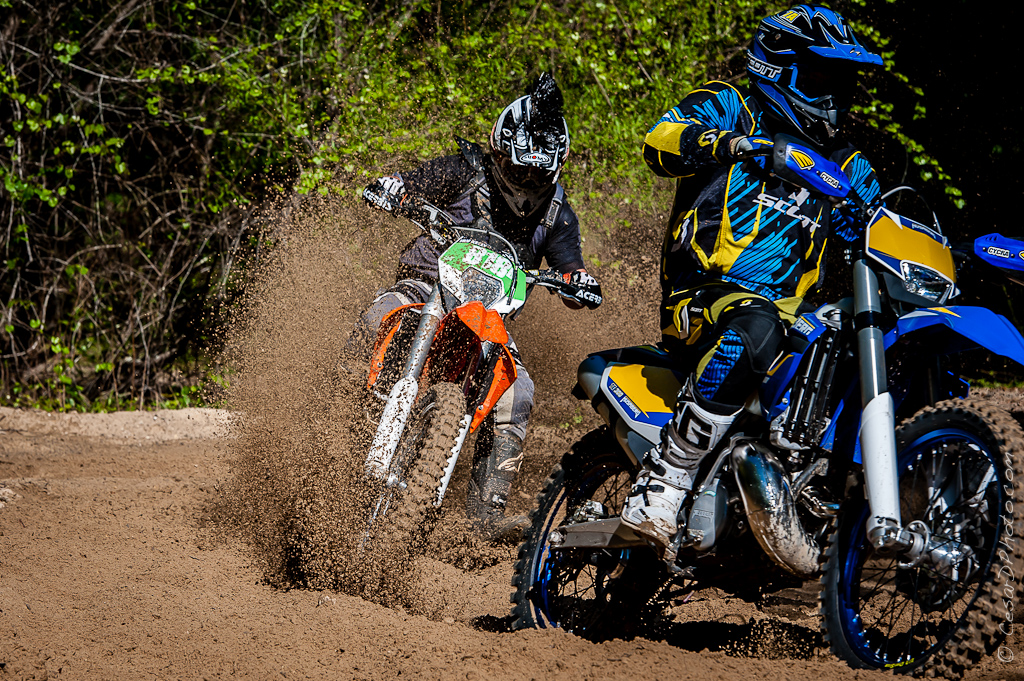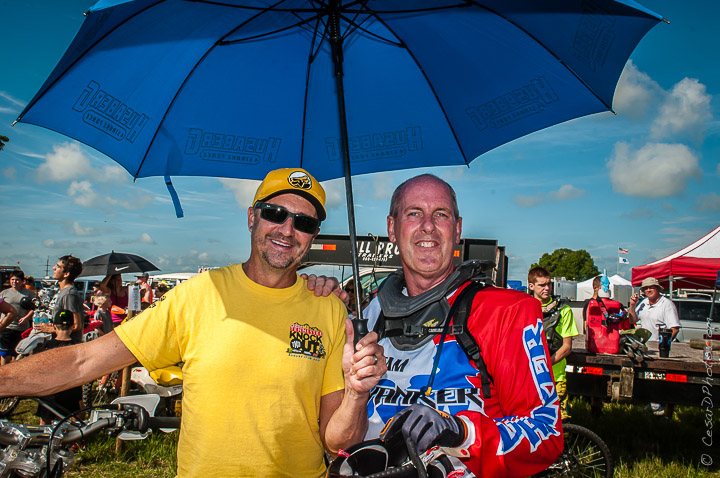An up-close look at the KTM 450 Rally that Marc Coma rode to victory in the 2014 Dakar Rally
An Article from Cycle World!
Man and machine
Approaching this year’s Dakar Rally, KTM was facing unprecedented competition. The Austrian manufacturer has won every edition since 2001 (no race was held in ’08), but 2014 found Honda and Yamaha fielding formidable challenges and hiring away top riders—Spaniard Joan Barreda and Frenchman Cyril Despres, respectively. Knowing they’d have to bring their A-game, KTM arrived at the start in Rosario, Argentina, with an all-new 450 Rally for team leader Marc Coma.
“Although the riders haven’t complained about the bike in the past, they’ve given KTM engineers a lot of feedback about areas that could be improved,” explains KTM Off-road PR Manager Jennifer Dick. “All of this data collected over the years has been compiled to create the basis for the new bike, with KTM’s R&D department, KTM Technologies, and KTM’s Motorsport department working hard together to create the new design.”
 Tailor-made
Tailor-made
Because the previous 450 Rally had been designed during the 690cc era (the displacement limit was lowered in 2011), the chassis was somewhat overkill for the engine, and there was unused space around the mill. “KTM has known for some time that the bike was due a revision, even though it was still winning races,” Dick says. “This year’s bike has been revised from the ground up.”
While Honda and Yamaha both use aluminum perimeter frames, KTM employs a chrome-moly trellis structure, which is so narrow that the swingarm must be mounted outboard, with the footpeg brackets attaching to the swingarm pivot (note that the chain runs between the frame and the left bracket, which incorporates a plastic slider).
High breather
With rally bikes, much of a designer’s work is focused on positioning the significant volume of fuel that the machines must carry—9.25 gallons in the KTM’s case—to achieve the mandated range of 275 kilometers (170 miles). To accommodate the single rear fuel cell, the large air filter is positioned above the engine, as on a streetbike, and the titanium Akrapovic exhaust header is routed below the engine. Details to note include a “skin” tack-welded to the header where it would emerge from the large skid plate, the gas cell’s transparent strip for monitoring fuel level, the oil cooler above the radiator, and the customized clutch cover. Not shown in this photo is the large, carbon-fiber skid plate, which houses a tool kit and the three liters of drinking water that rules require.
Front and center
Just like factory 450 SX bikes of Ken Roczen and Ryan Dungey, the 450 Rally is suspended by a Cone Valve fork from KTM subsidiary WP, with top-out springs, aluminum internals, externally adjustable spring preload and damping, and no shims. WP also makes radiators, and the rally bike boasts a beautiful curved unit to deal with the often-intense desert heat. Note the dual odometer cables zip-tied to the front brake line.
Desert donuts
Michelin has a long history of success in Dakar, and the French company’s Desert Race tires were fitted not only to the factory KTMs, but also the Yamahas and even the Honda of five-stage winner Joan Barreda (the rest of the Honda riders used Metzeler). The brake setup comprises Moto Master rotors (240mm front, 300mm rear) squeezed by Brembo calipers (note that the caliper’s pin clips are safety-wired to prevent their loss during trailside repairs). The spokes are zip-tied where they cross for strength and to prevent any broken spokes from causing damage by becoming tangled in the wheel. High-quality Excel rims are used, and the hybrid steel-aluminum rear sprocket is by Supersprox. The transmission is a wide-ratio six-speed, and with final-drive gearing of 14/51, top speed is approximately 112 mph.
Straight and narrow
Designing a 450-specific chassis allowed KTM to make the bike more slender, improving high-speed aerodynamics, maneuverability, and rider comfort. The front fuel tanks are narrower thanks to a more efficient use of the space around the new engine, which is powerful and has very good torque. Reliability was key, as conditions were particularly grueling, with longer special stages, shorter transfer sections, and brutal heat (Portugal’s Paulo Goncalves had to watch helplessly as his Honda burned to the ground on stage 5). Coma likened the course to those of the pre-2009 African Dakar Rallies.
Tower of power
Riding with navigation equipment has always been a necessary evil in rally racing, as dash units tend to be unrefined, heavy, and unwieldy, even blocking the rider’s view of the front wheel—hardly an ideal arrangement in technical sections. The 450 Rally changes that, with a beautiful, carbon-fiber navigation tower that’s extremely well-thought-out and sanitary. “KTM has put a lot of effort into making that tower slimmer and more compact so that the riders can see the front wheel,” Dick says, “which gives them confidence.”
In addition to the windscreen and headlight, the unit houses the route-book holder, twin ICO Tripmaster odometers, two GPS units, and the heading repeater, as well as signal lights for the fuel tanks, oil, fuel injection, and high beam. The word “Balise” is French for beacon, and refers to the marine-style IriTrack SARSAT (Search And Rescue Satellite Aided Tracking) unit that riders can activate when in distress. The tower is mounted to the head tube so as not to make steering unnecessarily heavy.
Cockpit access
This view shows the slender profile that aids nimbleness in the technical conditions that are becoming more common in the Dakar. The Twin Air filter resides beneath the pair of narrow front fuel cells. There are separate front and rear fuel pumps, so the rider can choose which tanks to draw fuel from to ensure ideal weight balance as gasoline is burned off. The Öhlins/Scotts steering damper is very popular for desert racing, as its high-speed valving system tames sudden jerks of the handlebar that occur with unexpected rock hits. The unit only damps away from center, so the front end is encouraged to straighten once the initial blow is absorbed. The triple clamps are by the German XTRIG Racing Technology and offer adjustable offset and handlebar position.
Roughing it
Although speed is obviously important in the Dakar, riders who are also intelligent and consistent have a big edge in getting a motorcycle through three countries, 13 days, and 5,400 miles. Apart from a pair of two-day marathon stages during which riders must perform their own maintenance, teams are allowed to work on bikes at day’s end, but replacement of bottom-end components incurs a time penalty. Although the 450 Rally had been planned for a long time, the design-production turnaround was quite tight, with the first real race test happening last October at the Rally of Morocco. The project’s early success is a testament to the team’s experience and hard work.
Fast four
The departure of former teammates for other squads, along with the tragic death of American Kurt Caselli last November, meant that Coma was KTM’s undisputed lead rider, and the Spaniard didn’t disappoint. He had missed last year with a shoulder injury and hadn’t won since 2011 (he also has victories in ’06 and ’09), and this year saw him top just three of 13 stages. Nonetheless, he conserved his equipment and kept mistakes to a minimum, and when the rally reached its finish in Valparaíso, Chile, there was no doubt as to who the top rider was.




